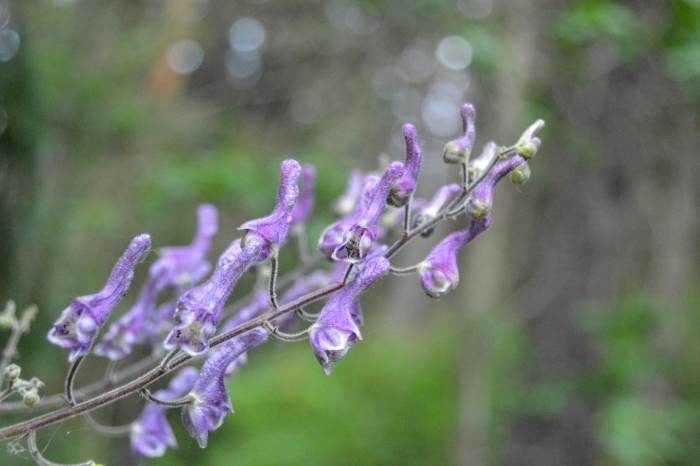Northern Wolf’s-Bane
(Aconitum septentrionale)
Northern Wolf’s-Bane (Aconitum septentrionale)
/
/

Ирина Хохрякова
CC BY 4.0
Image By:
Ирина Хохрякова
Recorded By:
Copyright:
CC BY 4.0
Copyright Notice:
Photo by: Ирина Хохрякова | License Type: CC BY 4.0 | License URL: http://creativecommons.org/licenses/by/4.0/ | Rights Holder: Ирина Хохрякова | Publisher: iNaturalist | Date Created: 2023-07-08T17:51:44-07:00 |























Estimated Native Range
Summary
Aconitum septentrionale, commonly known as Northern Wolf’s-bane, is an herbaceous perennial plant native to a variety of habitats including mountain meadows, forest clearings, and riverbanks across much of Europe and northern Asia, from lowlands to the subalpine zone. It typically grows up to 3 feet tall and features deeply palmately lobed leaves that are green in color. The plant is well-known for its hooded, dark violet flowers that bloom in the summer and are mainly pollinated by long-tongued bumblebees. Despite its beauty, all parts of the plant are highly toxic due to the presence of alkaloids such as aconitine.
Northern Wolf’s-bane is valued in cultivation for its striking flower spikes and is often used in perennial borders, woodland gardens, and as a part of naturalistic plantings. It requires moist, well-drained soil and can thrive in both full sun and partial shade. While it has historical medicinal uses, due to its toxicity, it is now primarily grown for ornamental purposes. Gardeners should handle the plant with care and be aware of its toxic nature to avoid accidental poisoning.CC BY-SA 4.0
Northern Wolf’s-bane is valued in cultivation for its striking flower spikes and is often used in perennial borders, woodland gardens, and as a part of naturalistic plantings. It requires moist, well-drained soil and can thrive in both full sun and partial shade. While it has historical medicinal uses, due to its toxicity, it is now primarily grown for ornamental purposes. Gardeners should handle the plant with care and be aware of its toxic nature to avoid accidental poisoning.CC BY-SA 4.0
Plant Description
- Plant Type: Herb
- Height: 3-4 feet
- Width: 1-1.5 feet
- Growth Rate: Moderate
- Flower Color: Blue
- Flowering Season: Summer, Fall
- Leaf Retention: Deciduous
Growth Requirements
- Sun: Part Shade
- Water: Medium
- Drainage: Medium
Common Uses
Border Plant, Butterfly Garden, Deer Resistant, Potted Plant
Natural Habitat
Mountain meadows, forest clearings, and riverbanks across much of Europe and northern Asia
Other Names
Common Names: Monkshood, Lusehatt, Lushatt, Torhjelm, Turem, Tålærm, Northern Wolfsbane, Wolfsbane
Scientific Names: , Aconitum septentrionale, Aconitum excelsum, Aconitum lycoctonum subsp. septentrionale, Aconitum lycoctonum subsp. septentrionale, Aconitum lycoctonum var. excelsum, Aconitum lycoctonum var. septentrionale, Aconitum lycoctonum var. septentrionale, Aconitum pterocaule var. albidum, Aconitum septentrionale var. maculatum
GBIF Accepted Name: